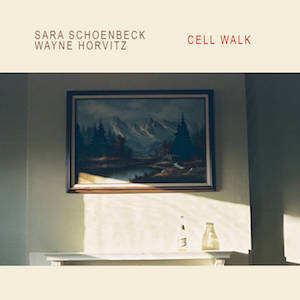Label: Rune Grammofon, 2020
Personnel - Hedvig Mollestad: guitar; Susana Santos Silva: trumpet; Erland Slettevoll: keyboards; Marte Eberson: keyboards; Ole Mufjell: percussion; Torstein Lofthus: drums.
After yielding considerable attention with five trio outings, the dauntless Norwegian guitarist Hedvig Mollestad, an advocate of prog-rock and jazz-metal aesthetics, digs into six originals with a lot to like. Here she leads an investigative bass-less sextet with two keyboardists - Erland Slettevoll and Marte Eberson - and two percussionists - Ole Mufjell and drummer Torstein Lofthus, who find no problem handling muscular rhythmic grids. Rounding out the group is the inventive Portuguese trumpeter Susana Santos Silva, whose improvisational prowess stands out in a couple of tracks.
Her trumpet is clearly heard on the less-than-two-minute opener “No Friends But The Mountains”, a meditation whose composure is not devoid of an intriguing sense of restlessness.
The abrasive guitar riff and vigorous rhythm inculcated in “A Stones Throw” can be compared to Pantera's “Cowboys From Hell”, even if they feel cooler in tone. This prog-metal section, fully charged with high-voltage currents, morphs into a more melodic passage - slow-paced and rich in texture - where the influence of Pink Floyd’s The Dark Side of the Moon is irrefutable. Moments later, the group goes berserk again, stimulated by nervy synth explorations and a coercive driving force that hit us hard, attracting everything into its spinning vortex.
Lacing luxurious sonic landscapes reminiscent of Yes with the heavy-duty textures of Tool, “Antilone” is another conspicuous example of tremendous robustness. Mollestad brings in strident guitar looping, hefty riffing, fleshy power chords, and a shredding solo initially underpinned by pure percussion. That's before things get cathartic with rock-solid drumming and synth washes.
Compared to the previously described piece, “Sightly Lighter” feels like a plume, shaping as an atmospheric synth-guitar ballad, while “One Leaf Left” starts as a modal ambient reflection with subtle gradations, becoming weightier as it advances toward the fierce final shout. However, its ending is not as dark or concentrated as “Ekhidna”, a volatile procedure that alternates heavy patterns, anthemic rock momentum with fair doses of melodicism, and avant-prog texture. Silva contributes to the melodic consistency, but later leaps forward to discharge a cleverly intoned statement infested with throbbing syllabic rhythms over rich percussive playing. The final keyboard solo is absolutely stunning.
Ready to conquer the scene with refreshing, powerful music, Mollestad deserves all the attention she can get. And she damn rocks!
Grade A-
Favorite Tracks:
02 - A Stones Throw ► 03 - Antilone ► 05 - Ekhidna








































